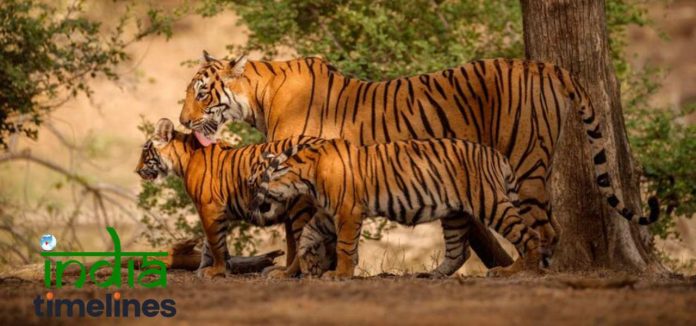
Jim Corbett National Park is a natural paradise nestled in the lap of the Himalayas in India’s northern state of Uttarakhand, which has captured the imagination of wildlife lovers, nature lovers and adventure seekers for generations. Established in 1936, it holds the distinction of being India’s oldest and one of the most iconic national parks. Named after the legendary British hunter and conservationist, Jim Corbett, the park offers a unique opportunity to witness the incredible biodiversity of the Indian subcontinent. Spanning across an area of approximately 520 square kilometers, this haven for flora and fauna is renowned for its wildlife safari experiences.
The Rich Legacy of Jim Corbett National Park
Jim Corbett, the man after whom the park is named, was a pioneer in wildlife conservation. He dedicated his life to preserving the endangered Bengal tiger population and, in doing so, laid the foundations for the park’s establishment. Today, the park continues his legacy by being a sanctuary for tigers, leopards, and various other species. The park’s primary aim is to protect and conserve the magnificent wildlife that calls it home.
Flora and Fauna
Jim Corbett National Park is a biodiversity hotspot, housing an incredible array of flora and fauna. The park boasts over 600 species of birds, making it a paradise for birdwatchers. Among the most sought-after avian species are the crested serpent eagle, great hornbill, and the strikingly beautiful peafowl. The park is also home to numerous reptiles, including the Indian python and the gharial, a critically endangered crocodilian species. And of course, the Bengal tiger, the park’s most famous resident, is the undisputed star of the show.
Apart from the charismatic big cats, Jim Corbett National Park shelters leopards, sloth bears, Indian elephants, sambar deer, barking deer, and several other herbivores. The park’s diverse habitats range from dense Sal forests to open grasslands, allowing this rich tapestry of wildlife to thrive. This makes it an excellent destination for wildlife enthusiasts looking to catch a glimpse of both iconic and elusive species.
The Thrill of a Wildlife Safari
A visit to Jim Corbett National Park is incomplete without embarking on an unforgettable wildlife safari. The park offers a variety of safari options to cater to different interests and preferences.
- Jeep Safari: A jeep safari is one of the most popular ways to explore the park. Accompanied by an experienced guide, visitors can venture deep into the heart of the forest, increasing their chances of spotting elusive wildlife. The rugged terrain, dense foliage, and the element of surprise add to the thrill of the experience.
- Canter Safari: For those traveling in larger groups, canter safaris are an excellent option. These open-top vehicles can accommodate more people and offer a panoramic view of the landscape, enhancing the overall safari experience.
- Elephant Safari: An elephant safari provides a unique and elevated perspective of the jungle. Riding on the back of a gentle giant allows you to approach wildlife discreetly and observe their natural behavior.
- Walking Safari: For the adventurous souls, walking safaris are available in certain zones of the park. These excursions are led by expert naturalists and offer a more intimate connection with the wilderness, allowing visitors to soak in the sights and sounds of the jungle.
Best Time to Visit Uttarakhand Jim Corbett National Park
The best time to visit Jim Corbett National Park largely depends on your preferences and what you hope to experience. The park is open to visitors from mid-November to mid-June, but it’s crucial to understand the seasonal variations.
- Winter (November to February): The winter months are ideal for bird watching, as many migratory birds visit the park during this time. The cool weather is also more comfortable for wildlife safaris, and the sparse vegetation makes it easier to spot animals.
- Spring (March to April): Spring is the best time for tiger sightings, as the dry and hot weather drives them to the watering holes. The clear skies and moderate temperatures make it an excellent time for safaris.
- Summer (May to mid-June): While the temperatures can be scorching, this is when the park’s flora is at its most vibrant. It’s also a great time to observe the behavior of animals during the peak of their breeding season.
Jim Corbett National Park is a treasure trove of India’s natural beauty and biodiversity. It’s a place where you can immerse yourself in the wonder of the wild, where the symphony of the jungle plays out, and where the most incredible stories of survival are written every day. Whether you’re an avid wildlife photographer, a nature lover, or simply someone seeking adventure, Jim Corbett National Park has something for everyone. This sanctuary dedicated to the legacy of Jim Corbett invites you to be part of an unforgettable wildlife safari experience that you’ll cherish for a lifetime. Come and explore this pristine paradise and witness the magic of the Indian wilderness at its best.
What is the best time to visit Jim Corbett park?
The best time to visit Jim Corbett National Park in India is during the winter (November to February) for pleasant weather and better wildlife sightings. The summer season (March to June) is great for tiger sightings but can be hot. The park is closed during the monsoon (July to September) due to heavy rainfall.
Why is Jim Corbett so famous?
Jim Corbett is famous for being a British-Indian hunter and conservationist who specialized in tracking and dealing with man-eating tigers and leopards in India. He authored books like “Man-Eaters of Kumaon” that highlighted his adventures and the importance of wildlife conservation. His work led to the establishment of India’s first national park, Jim Corbett National Park, and he remains an iconic figure in the field of wildlife preservation.
Jim Corbett National Park is situated in which state?
Jim Corbett National Park is situated in the northern Indian state of Uttarakhand. It is one of the oldest national parks in India and is known for its diverse wildlife, including the Bengal tiger. The park is named after the famous hunter and conservationist Jim Corbett, who played a key role in its establishment.
Which are the tourism zones in Corbett Tiger Reserve?
Corbett Tiger Reserve has six tourism zones:
- Dhikala Zone: Known for diverse wildlife and the Dhikala Forest Lodge.
- Bijrani Zone: Offers lush greenery and open grasslands.
- Jhirna Zone: Open year-round, good for tiger sightings.
- Durga Devi Zone: Great for bird-watching and picturesque landscapes.
- Dhela Zone: A quieter, less crowded experience.
- Corbett Landscape Zone: Surrounds the core zones and is used for eco-tourism.
Be sure to check the latest rules and regulations before visiting.
How to Book Ticket for Safari in Corbett Tiger Reserve?
To book a safari ticket in Corbett Tiger Reserve:
- Visit the official website or the government’s safari booking portal.
- Register or log in.
- Choose your preferred zone, date, and time.
- Check availability and select the slots.
- Enter visitor details and make the payment.
- Save the confirmation.
- Carry valid photo ID when visiting the park.
Ensure to book well in advance, and check for the latest information on the official website.


































Outstanding post, you have pointed out some great points, I too believe this s a very superb website.